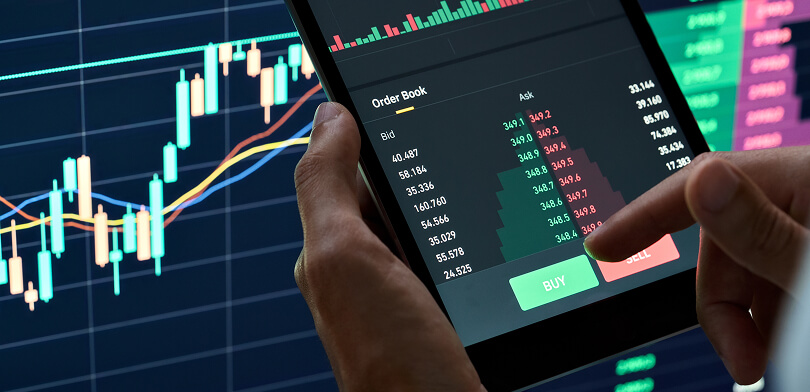What is an Options Chain
An options chain includes all the available call and put options for any asset or index you choose. In most cases, it contains two sections, each dedicated to buying and selling options. Columns show important information, while each row includes a different strike price in option trading. Stocks and markets within India such as the Nifty 50 and Bank Nifty, are usually performed by options chains. Having a hold on the available chain chart makes it effortless to function with options data.
Various Features of an Options Chain
Several important factors make up an options chain.
Strike Price: The Strike Price is the price at which you can choose to buy or sell the underlying asset. It allows us to find out what an option is truly worth at its current market price.
Expiration Date: The expiration date is the point at which your option will no longer be active. Most Indian options expire once a week or once a month.
Types of Option: Calls and puts are the only options available. With calls, you can buy stocks and with puts, you can sell them.
Premium: It reflects the price the option has in the market, affected by things like how volatile and fast it is decaying.
Volume and Open Interest: Volume tells you how many trades take place during a trading session and open interest indicates how many unfilled contracts remain. They tell us how much the market is involved in trading.
Reading the Options Chain
- The first step in looking at an options chain is to pick the underlying asset or index.
- People using Indian markets have access to trading options that offer connection with various chains and ways to organize their columns.
- Check the order of the target prices at the bottom of the page. You should also notice that the call and put options are presented side by side.
- Then, you should open the premium box to view the latest trade values.
- You can tell if an option is in, at or out of the money by comparing what the option costs now to its strike price.
- Going further, observe how much trading activity is taking place in the market. It guides traders to notice where the highest volume of trading is happening.
Understand Key Components of Option Chain in Detail
-
Strike Price & Premium
The strike price is the set price for buying or selling the underlying securities, if you decide to use your options contract. The premium refers to the first amount an option buyer gives to the seller while making the purchase through their broker.
An options trade is successful depending on the kind of option held.
Call Option: When the share price is above the strike price plus the premium paid, the call option is considered profitable.
Put Option: The profit in a put option happens when the market price of the asset is lower than the strike price less the premium.
-
Open Interest (OI)
It measures the total number of contracts that are still open for a strike price. These are the number of contracts that have not yet been closed or executed.
If OI is high, there is a lot of trader interest and high liquidity, making it simple for traders to enter or leave the market.
-
If there is a change in OI
- It displays the way in which Open Interest has fluctuated with the passage of time.
- Noticeable OI movements often reflect that a big number of traders are buying or selling in the market.
-
Volume
In a certain timeframe, volume shows the total number of options contracts traded at one specific strike price.
When there’s heavy trading volume, it can suggest a trend is happening and show how traders feel about the market. Still, you should verify this observation alongside prices and open interest.
-
Implied Volatility (IV)
Implied volatility suggests how much the market expects future price instabilities based on options pricing.
Comparing IV across various strikes and expiration dates can provide traders with important insights into market expectations.
High IV = Expectation of significant price changes ahead.
Low IV = Expectation of minor price changes or greater stability.
-
Last Traded Price (LTP)
LTP shows the latest price for the options contract on the market. To help understand the current state of the market, the distance between the current price and the LTP is called “Net Change.”
-
Bid and Ask Price
Bid Price: At a given strike price, bid price is the contract’s maximum buy value for a bidder.
Ask Price: This is the minimum offer made by a seller for a contract at that particular strike price.
-
Bid and Ask Quantity
Bid Quantity: This term shows how many contracts buyers are willing to purchase at a chosen strike price.
The quantity shows the number of shares buyers can purchase at a selected price.
Ask Quantity: This indicates the total number of contracts that sellers are prepared to sell at a specific strike price, showing the supply.
-
Option Greeks
Most of the time option chains display the Option Greeks. In order to know how options prices change, traders look at Delta, Gamma, Theta and Vega. One can use these Greeks to learn how the price, time and volatility of the underlying asset impact the price of an option.
Recommended Read: How to Place Trades Using Option Chain?
Understanding ITM, ATM, and OTM
In the Money (ITM):
- Call option: Strike price < Current market price.
- Put option: Strike price > Current market price.
At the Money (ATM):
- Option: Strike price ≈ Current market price.
Out of the Money (OTM):
- Call option: Strike price > Current market price.
- Put option: Strike price < Current market price.
Using the Options Chain for Analysis
The most important benefit of an options chain is what you learn from its analysis.
- Check the strike prices with high Open Interest. Many times such moments give people the strength or weakness they need to face a situation.
- A sharp rise in volume or OI could show that a major movement or big trade is happening.
- Consider different calls and spread data among several categories to see how everyone is feeling about the market.
- If the number of open puts is greater than calls for a certain strike, traders may be taking a bullish view because the majority seems to believe the market price will rise.
- Combining all this data will help you better see where the market is positioned.
Recommended Read: How to Read Options Chain?
Tips for Option Chain
A lot of Indian brokers help new traders by providing them with either practice accounts or educational resources. You can see how the options work without worrying about losing your funds. Go through educational guides to learn more about what happens at each stage. Keeping a trading journal to write down your ideas can help you improve your trading. Older management structures provide newcomers with the opportunity to handle options trading more effectively over the long run.
Conclusion
Indian traders have to be able to review an options chain in order to carry out their functions. Investors can uncover a lot about the market by studying strike prices, expiration dates, fees, the amount traded and open interest. Regular studying and trading help traders better understand options chains.










